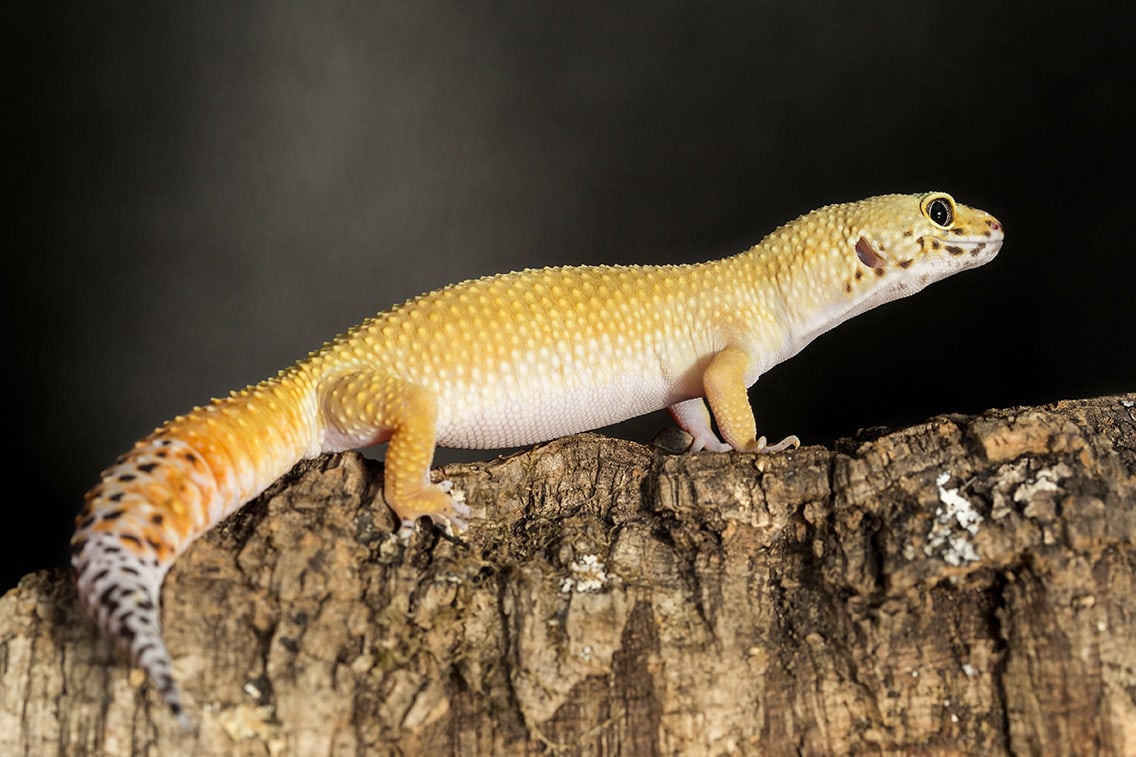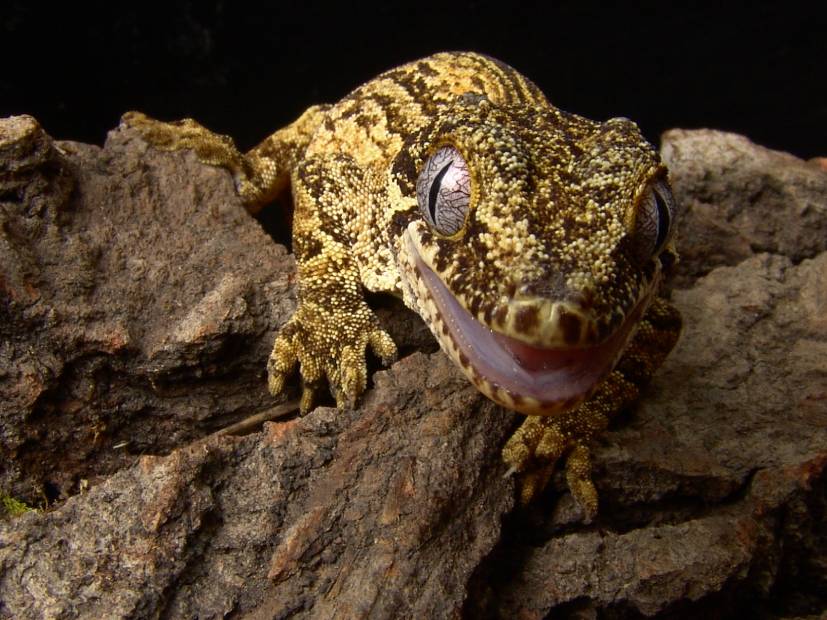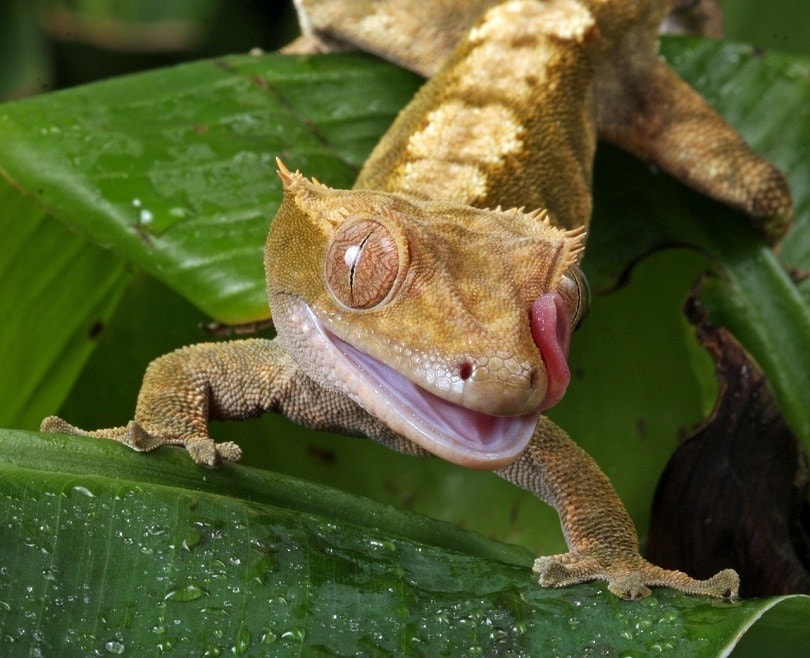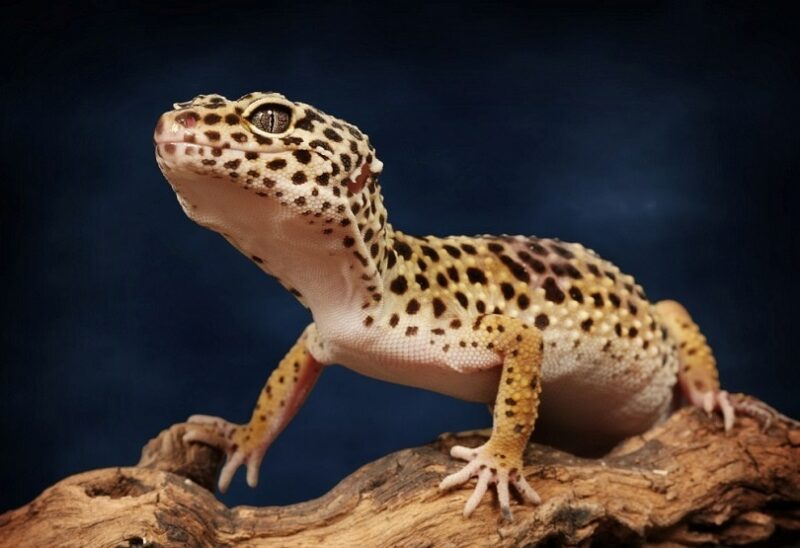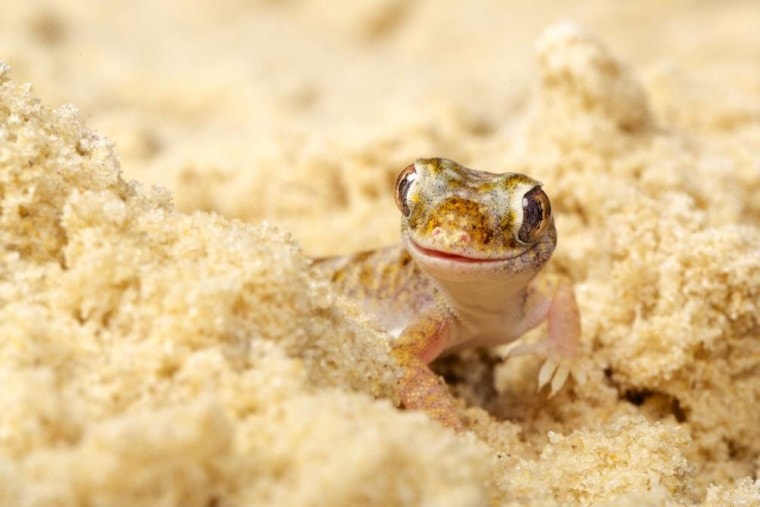
The Namib Sand Gecko is also known as the Web-footed Gecko due to its tiny, webbed feet. This small sand burrower is an interesting pet for the hands-off pet owner. They do not like to be handled and prefer to be left alone. If you are looking for a low-maintenance pet to observe, then read on to learn more about these cute little geckos!
 Quick Facts About Namib Sand Geckos
Quick Facts About Namib Sand Geckos
| Species Name: | Pachydactylus rangei |
| Family: | Gekkonidae |
| Care Level: | Low maintenance |
| Temperature: | 85 to 92 degrees Fahrenheit by day, cooler at night |
| Temperament: | Solitary, nocturnal |
| Color Form: | Pale salmon, light brown stripes |
| Lifespan: | 5 years |
| Size: | 5 inches |
| Diet: | Insects |
| Minimum Tank Size: | 10 gallons |
| Tank Set-Up: | Sand, hiding places |
| Compatibility: | Can be kept together |
Namib Sand Gecko Overview
As the name implies, the Namib Sand Gecko comes from the Namib Desert in southern Africa. These small creatures are also known as Web-footed Geckos because of their webbed feet. It is believed that their feet are an adaptation to help them run along the top of the sand and burrow beneath it.
As pets, the Namib Sand Gecko prefers to be left alone and not handled frequently. They do best in a tank by themselves or with 1 or 2 others of the same species. People find them interesting to watch because they are very fast and adept at burrowing, climbing, and hunting insects. They are also unique in appearance with their pale, almost translucent skin, huge eyes, and webbed feet.
The Namib Sand Gecko is nocturnal, which is one reason for its large eyes. They can spot even the smallest insects in the dark when they are hunting.
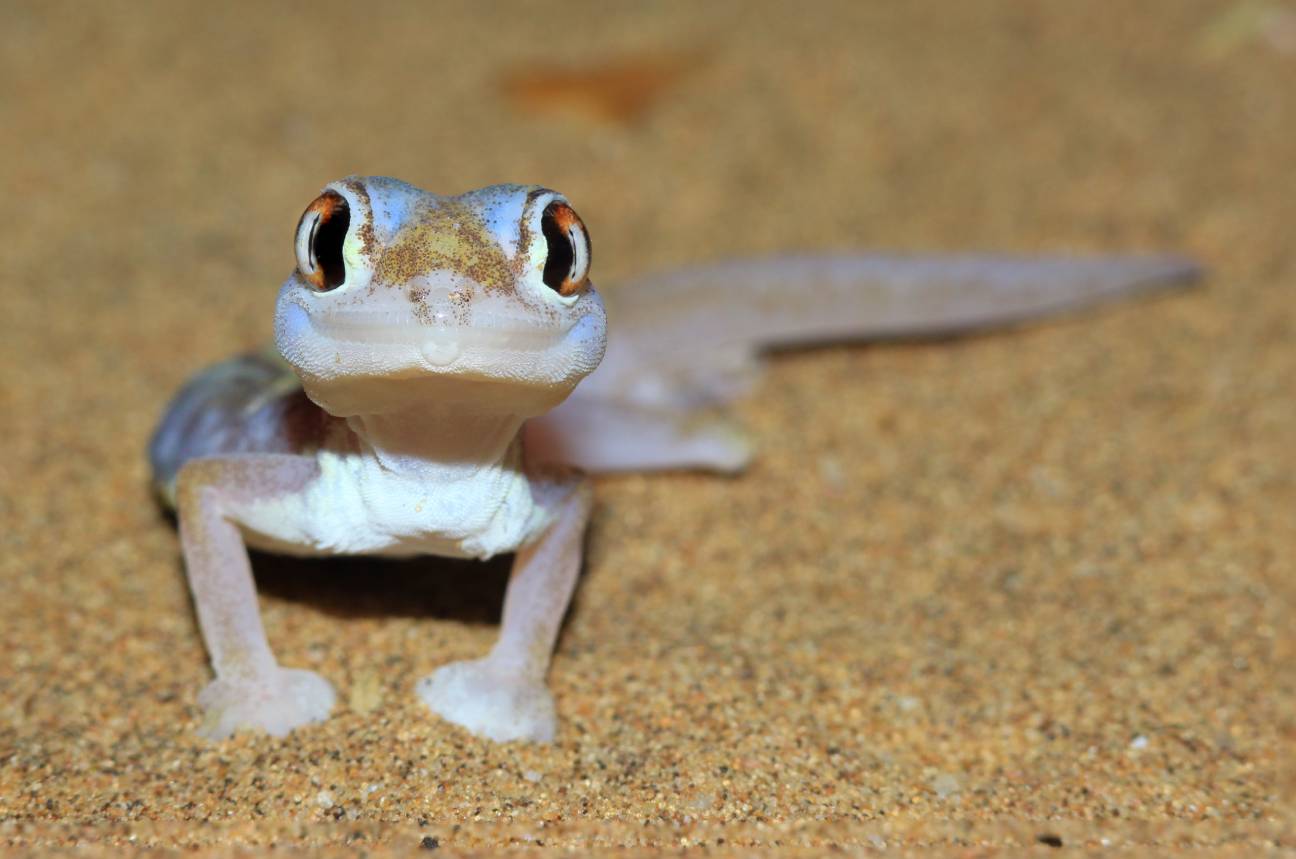
How Much Do Namib Sand Geckos Cost?
There is a wide range in the price of Namib Sand Geckos available for purchase. This could be because they are native only to the Namib Desert and are not often bred in captivity. The current price range of these geckos appears to be anywhere from $70 to $300. It is important to note that many are captured from the wild and sold as pets, which is not ideal for the animal.
Typical Behavior & Temperament
The Namib Sand Gecko is not a good choice for a pet if you want to hold it and play with it. They are timid and like to be left alone. They can get along with one another if you have multiple geckos in one enclosure with some exceptions, but most do not enjoy human contact.
Their bodies are made for hiding, burrowing, and running very quickly through the sand. They are nocturnal and sleep in the sand during the daylight hours. These geckos hunt at night, using their quick feet, large eyes, and darting tongues to catch insects.
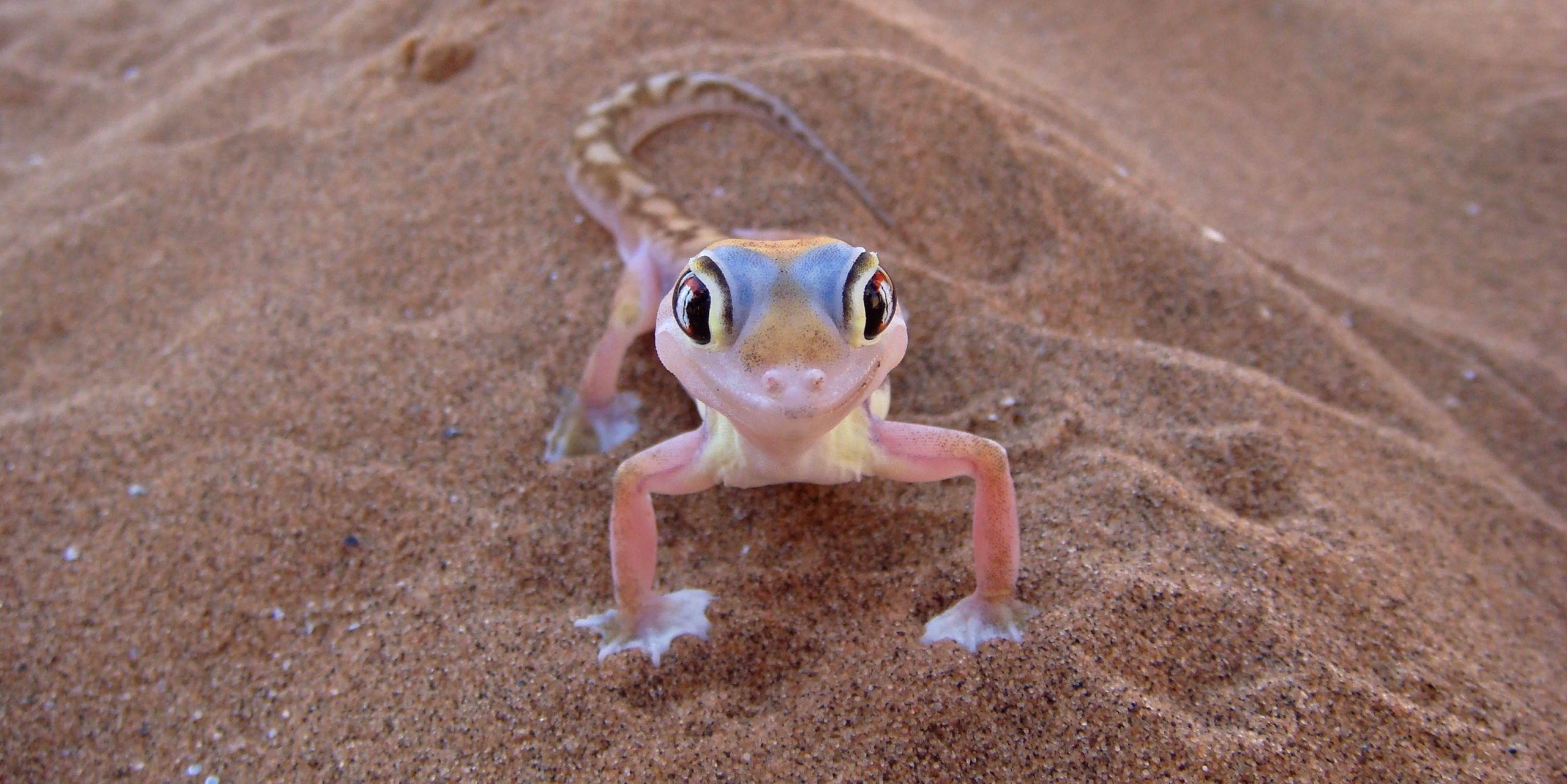
Appearance & Varieties
Everything about the Namib Sand Gecko’s appearance demonstrates an adaptation to their living conditions. They are desert creatures who like to hide and burrow in the sand. Their pale, nearly translucent skin color allows them to blend right in.
Their feet are webbed and have microscopic hooks that give them good traction for running on and digging in the sand. The Namib Sand Gecko has huge eyes that are either dark brown or red. These large, lidless eyes allow them to spot insects at night. Since they do not have eyelids, they clean their eyes by licking them.
When fully grown, the Namib Sand Gecko will be about 5 inches long. Half of that length is from their tails. Males typically will have thicker tails while females are slightly heavier overall.
How to Take Care of Namib Sand Geckos
Habitat, Tank Conditions & Setup
Namib Sand Geckos are wild animals, so if you are going to keep them as pets, you need to make sure that their environment mimics the natural environment as closely as possible. They live in the desert, so you will need to create a similar habitat in their tank to keep them healthy and happy.
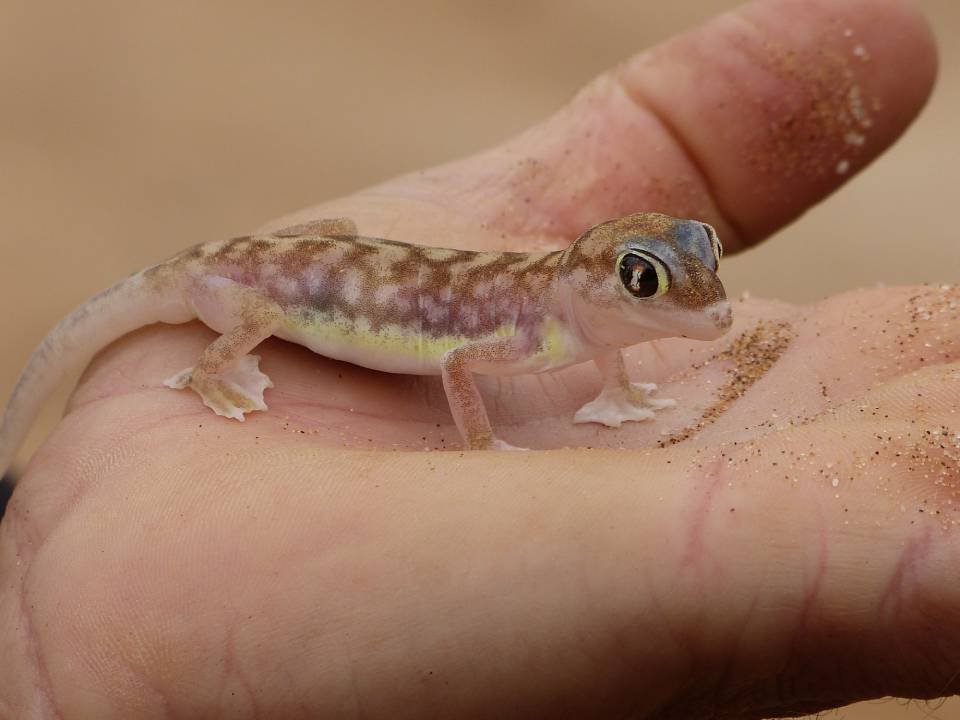
Tank
At a minimum, your Namib Sand Gecko will need a 10-gallon glass tank. You can keep up to three geckos in a tank this size. If you have more or just want to provide them with more room to move around, a larger tank would be fine.
Bedding
The Namib Sand Gecko must have sand in its tank. The minimum depth is 4 inches, but 6 to 8 inches would be even better for them. They need to burrow during the day, so the sand needs to be deep enough to allow this.
Temperature
This desert dweller likes it hot. The temperature in the tank should be kept between 85 and 92 degrees Fahrenheit. At night, it should be lowered to 70 to 72 degrees Fahrenheit. An occasional light, warm mist at night would mimic their natural surroundings, just be careful not to overdo it.
Lighting
The Namib Sand Gecko does not need any special UVA or UVB lighting like some other reptiles. Instead, an overhead heat lamp will give them the heat they need during the day. It is recommended that you only use an overhead heat lamp. A heating pad that goes under the tank can get too hot for them when they burrow in the sand.
Decoration
They do not require many decorations in the tank. A few rocks that they can hide behind or burrow under should be sufficient.

Do Namib Sand Geckos Get Along with Other Pets?
Namib Sand Geckos can live together, but you should be careful about keeping two males in the same tank. They have been known to become aggressive toward each other when they feel there is competition for food and females.
These small geckos should be kept away from other pets for their safety. They are small and delicate. Their skin and limbs could easily be damaged by larger or more aggressive pets.
What to Feed Your Namib Sand Gecko
The Namib Sand Gecko eats insects in the wild, so their diet in captivity should consist of the same. The ideal food for your pet gecko is live crickets. They will get exercise trying to catch their prey, and crickets provide the nutrition geckos need. They can also eat worms. It is recommended that young geckos be fed every day, while adults can be fed every 3 days.
Keeping Your Namib Sand Gecko Healthy
As these are wild animals, not much is known about any specific health issues that they are prone to. However, maintaining a proper environment and feeding them the right amount of food are the two most important things you can do to keep your pet gecko healthy.
If you do notice any discolorations or redness of the skin or eyes, lethargic behavior, or loss of appetite, you should consult with an exotic animal veterinarian.
Breeding
In the wild, the breeding season is in the spring. The female Namib Sand Gecko lays eggs in pairs. They can lay up to 8 pairs at a time. Once they lay their eggs, they bury them in the sand to keep them warm. The eggs hatch in about 8 weeks. Baby geckos begin eating insects within a day or two of hatching.
 Are Namib Sand Geckos Suitable for You?
Are Namib Sand Geckos Suitable for You?
If you are a reptile enthusiast who wants a hands-off pet that you can observe, then the Namib Sand Gecko might be a good choice for you. They are relatively easy to care for as long as you set up their environment correctly. You can also keep more than one in a tank, as long as they are not both males. Watching these cute little geckos can provide hours of entertainment for the experienced reptile owner.
- You May Also Like: 11 Best Geckos to Have as Pets (With Pictures)
Featured Image Credit: Mark Bridge, Shutterstock
 Quick Facts About Namib Sand Geckos
Quick Facts About Namib Sand Geckos